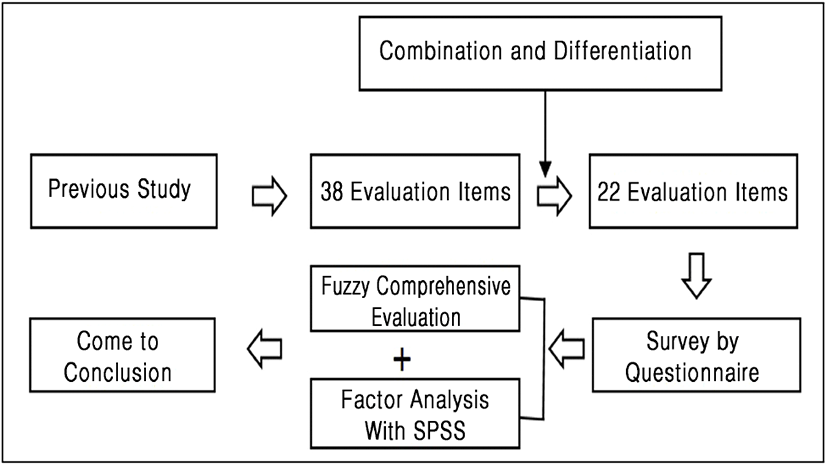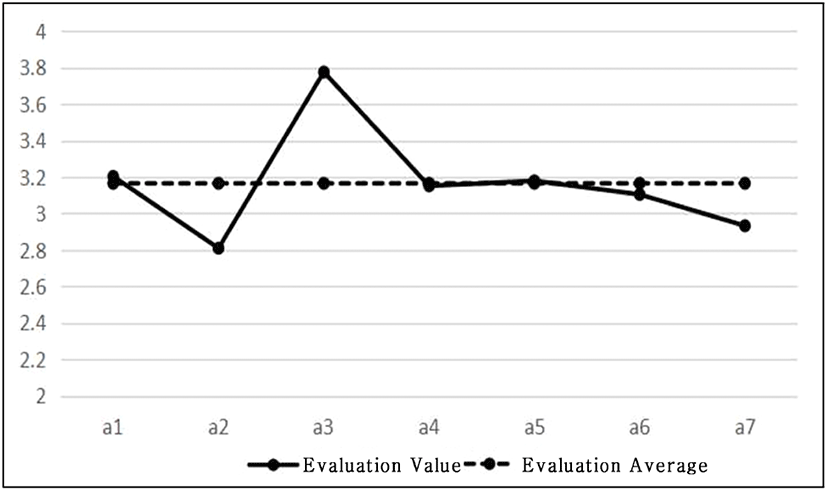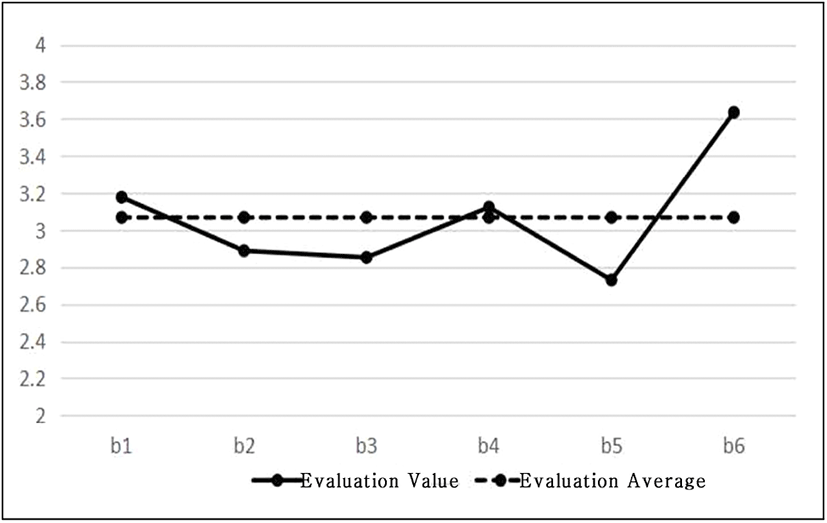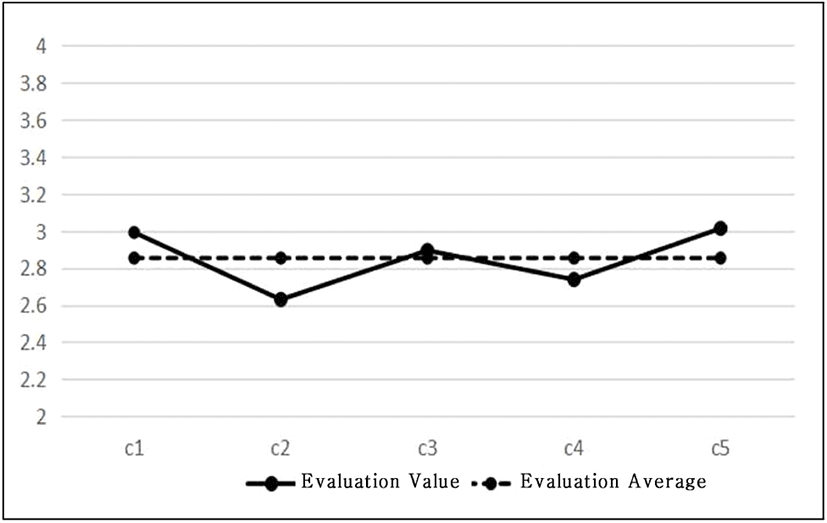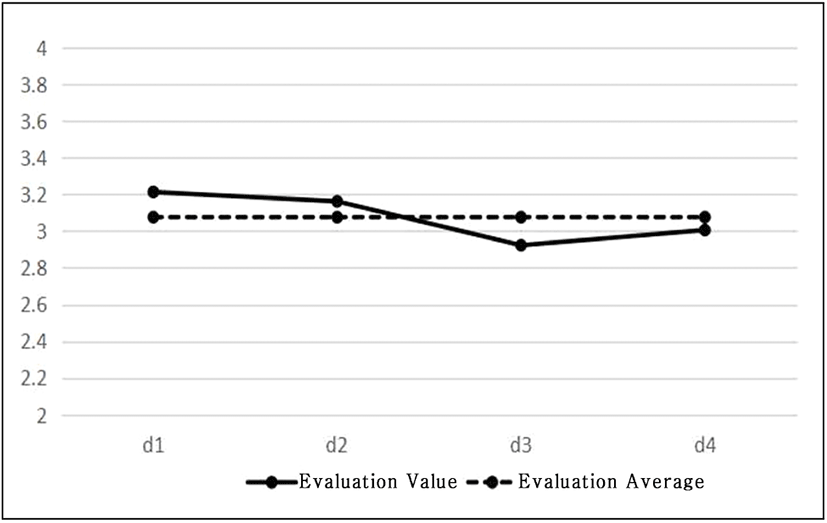Ⅰ. Introduction
The sign system originated in national parks in Europe and the United States in the early 20th century and was mainly used to introduce visitors to the natural resources in national parks(Tilden, 1957). After a century of development since then, the sign system has became an important way of outdoor environmental education and has been widely used in various scenic spots. Sign system mainly includes interpretation content, interpretation form and interpretation purpose1)(Lewis, 1980; Ham, 1993, Beck and Cable, 2000).
A proper sign system can provide tourists the information of the scenic spots in the maximum extent and help them complete their visiting experiences with pleasure(Zhong et al., 2000; Luo et al., 2005). Sign system is one of the most widely used media in the scenic spot(Zhong and Wang, 2011). It is because of the extensive use of the sign system that many scholars at home and abroad have carried out in-depth investigations and studies. The sign system conveys various guidances, scenic spot and landscape information for tourists, and has the functions of educational service and management(Parks, 1978; Kuehn et al., 1995; Dierking and Pollock, 1998; Madin and Fenton, 2004; Gross et al., 2006; Tang, 2006; Kim et al., 2015). Wu(2009) mentioned that the sign system also has the advantages of low cost, common materials, and highly free selectivity of tourists. Therefore, the sign system is now one of the most widely used guide media in the scenic spots. Laws(1998), Zhang and Lin(2002), Zhang and Hu(2006), Tang (2006) summarized the design principles of the sign system, pointed out the emphasis to be the layout and the tourists' perspective. Zhong and Luo(2006) summed up four stages of the sign system, including design, manufacture, layout, evaluation and maintenance, and emphasized the importance of evaluation and maintenance.
Mount Tai(泰山) is not only an outstanding natural scenery, but also an important cultural heritage of historical value. Among the scenic spots in China, the attention of foreigners is second only to the Great Wall(http://taian.iqilu.com/taian minsheng/2014/1017/2176797.shtml). A reasonable and effective sign system is necessary to spread the natural and cultural value of Mount Tai. This is conducive to the realization of the social, economic, cultural and ecological development model of Mount Tai scenic spot. However, although Mount Tai Mountaineering Road sign system (guide sign, name sign, interpretation sign, warning sign) is in place, its interpretation content is lack of interest, and the interpretation method is quite single, resulting in the decreased readability and short of humanized scale.
Therefore, the purpose of this study is to deduce the influence factors of the sign system of Mount Taishan scenic area for tourists, analyze the satisfaction of tourists, and provide suggestions for the sign system of Mount Tai Mountaineering Road to improve tourists’ satisfaction in the future. This study is of great significance to readjust the sign system in the future, enhance the overall satisfaction of tourists, and provide necessary theoretical basis for planning and design.
Ⅱ. Theoretical Study
The evaluation of the sign system is an essential part of the inspection and quality improvement of scenic information interpretation(Wang, 2014). Wagar(1976) and Roggenbuck(1979) listed various methods of evaluation, which were summarized into 13 ways2) by Wang (1989). He compared and analyzed the characteristics of each interpretation method. He also pointed out that the survey by questionnaires has obvious advantages in finding satisfaction, preference, and behaviors of tourists. Furthermore, it obtains high accuracy from the data in a viable way. These evaluation methods are mainly assessed from three aspects of the interpretation media, the interpretation content and the tourists' responses to the sign system, in which the response of tourists plays the most important role.
Fuzzy comprehensive evaluation is one of the multi-standard evaluation methods that uses the membership degree of fuzzy theory for evaluation(Won and Kim, 2017; Hu and He, 2000). In addition, the evaluation is able to clearly quantify the data(Pan, 2015). A variety of evaluation items are selected and the subjective evaluation is given among these items(good, medium. bad, etc.). The importance of each item is adopted to evaluate the object comprehensively. Fuzzy mathematical theory is applied to convert qualitative evaluation into quantitative evaluation to obtain objective satisfaction results.
III. Research Methodology
Known as the “the first of the Five Sacred Mountains(五岳之首)", Mount Tai is famous for its magnificent scenery and has been rated as a World Natural and Cultural Heritage site. There are 4 mountaineering roads in Mount Tai, including East Road, Middle Road, West Road and North Road. The Middle Road starts from Red Gate Palace(紅門), Tai'an(泰安) City, Shandong Province, and passes through Halfway Gate to Heaven(中天門) and South Gate to Heaven(南天門) to the top of Mount Tai(Refer to Figure 1). Mount Tai Mountaineering Road Middle Road(hereinafter referred to as Mount Tai Mountaineering Road) is the only way for Chinese emperors to ascent Mount Tai for offering sacrifices to gods of universe(封禪), and is part of the historical and cultural axis of Taian city(泰安歷史文化軸). It has the significance of reaching heaven from man’s world in Taian triple space(the nether world, man’s world, heaven).In addition, it is the most typical mountaineering road that offers an impressive view of the mountain scenery and a view of the cityscape of Taian. The road with a length of about 7,000 meters has 6,600 stone steps, thus most tourists visit it on foot. The sign system is considered to be the most important interpretation form because of this type of tour(Veverka, 2008). Therefore this study set Mount Tai Mountaineering Road Middle Road as the object.
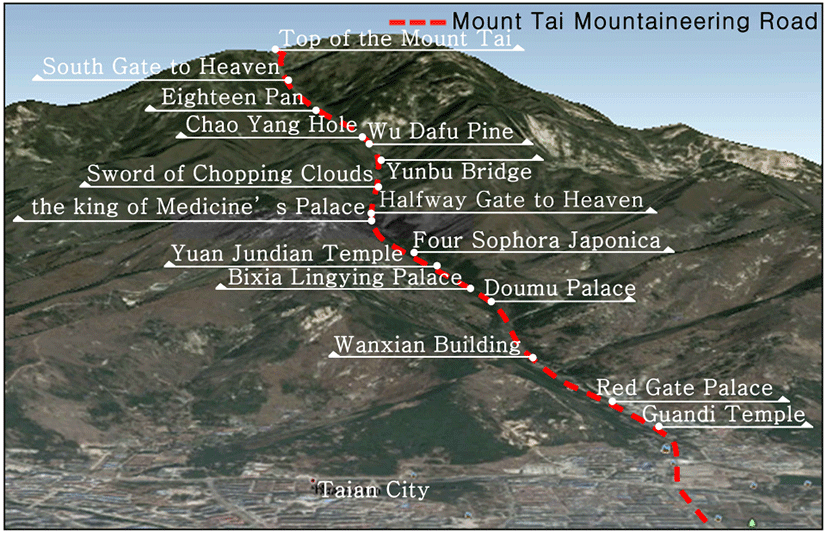
The research method of this study is as shown in Figure 2. At First, the 38 evaluation items of Mount Tai Mountaineering Road sign system were derived from the previous studies and then 22 evaluation items were finally obtained by comprehensive subdivision. Second, questionnaire containing the final selected evaluation items of the sign system was conducted among the tourists of Mount Tai Mountaineering Road. SPSS 19.0 was used for factor analysis of questionnaire data, and then fuzzy comprehensive evaluation was carried out. Third, the tourists satisfaction for each factor of the sign system was analyzed and conclusions were drawn.
The selection of evaluation items was made by referring to previous study on the sign system of historical streets, nature reserves and national parks(Tang, 2003; Zhong and Luo, 2006; Chang, 2009; Niu, 2008; Deng, 2010; Huang, 2013; Ji and So, 2014). In addition, it was discussed and analyzed with 5 professors and 12 graduate students of landscape architecture, and finally 22 evaluation items through comprehensive subdivision were selected(Refer to Figure 3).
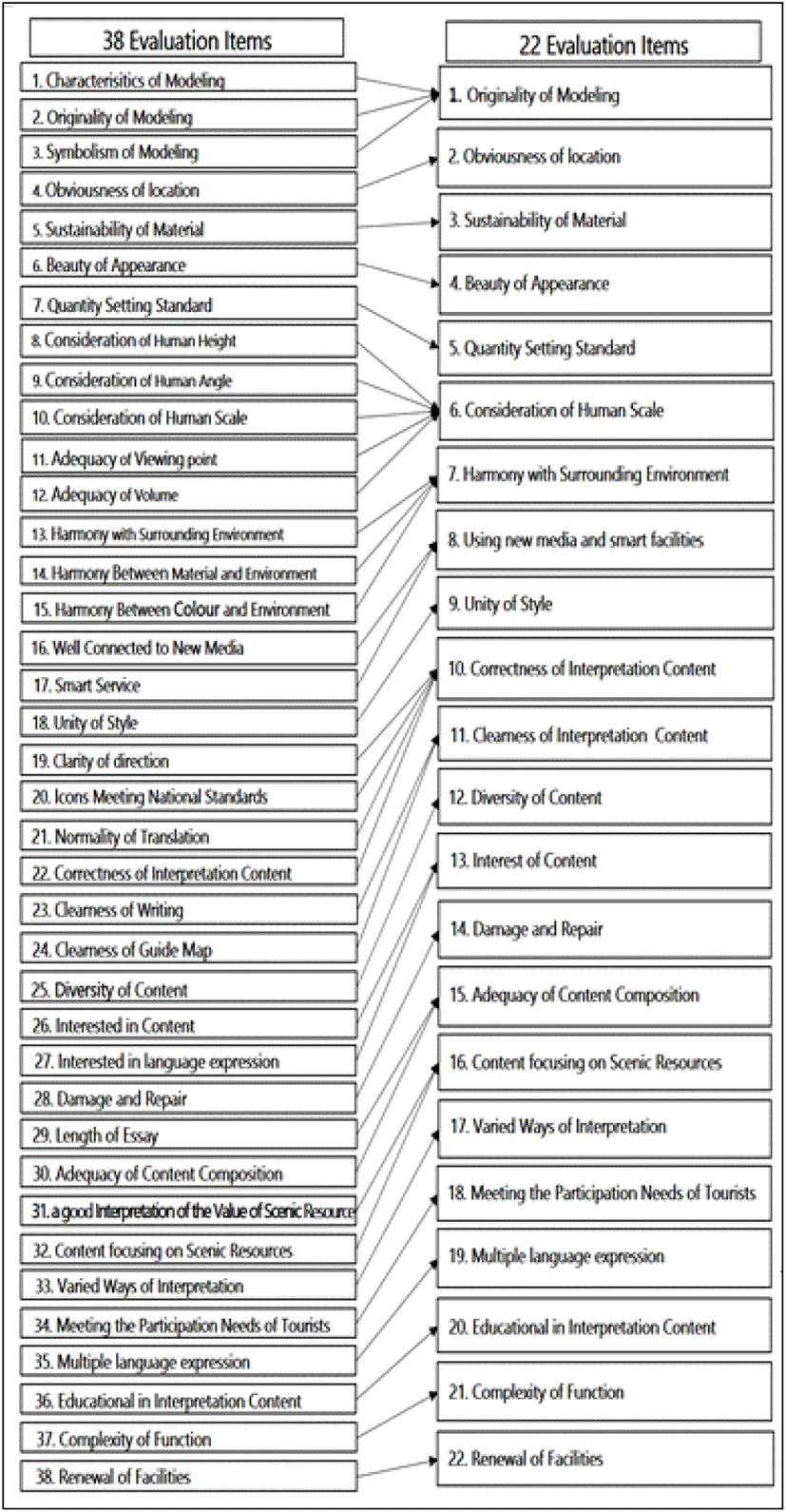
In the questionnaire, 9 items were settled for the purpose of analyzing the general characteristics of the respondents, 38 items for the purpose of analyzing the evaluation items of the identification system, and 22 items were selected through the comprehensive subdivision method. The 5-level Likert Scale was used.
The method of questionnaire survey is self-administrated survey, but for the elderly respondents, personal interview was conducted instead. The survey was conducted in a four-month period from June 2018 to October 2018 for 300 tourists on the Mount Tai Mountaineering Road. However, except the 11 questionnaires that could not be used for analysis, a total of 289 questionnaires were analyzed with SPSS 19.0 to verify the reliability and carry out factor analysis.
Fuzzy comprehensive evaluation’s steps are as follows.
Here Ei is the evaluation value of the ith influencing factor. Each evaluation value has its own scale range and evaluation grade(good, medium, bad, etc.).
Weight calculation is the core of fuzzy comprehensive evaluation. The magnitude of the weight value is the order of the importance of the influence factors. Since the importance of each evaluation item or influencing factor is different to tourists, the comprehensive evaluation result is not the average of the satisfaction of each evaluation item, but controlled by the importance of each evaluation item(Wang, 2014). In this study, the weight value is obtained by normalizing the rotational load of the evaluation item. The formula for weight U is as follows.
Ui={weight value of each evaluation item ui belonging to the ith influence factor}
Here vi is the rotational load of evaluation item belonging to the ith influence factor and v1, v2 ⋯vx are the final evaluation items determined through factor analysis. Ui or ui is the importance of the ith influence factor Ui or evaluation item ui.
The evaluation matrix of the influence factors is constructed by the evaluation items for each factor.
Here rij represents the ratio of evaluation content j in evaluation set E to which the ith influence factor of factor set Si belongs.
The result vector of fuzzy comprehensive evaluation is derived by using mathematical formula and cast operator(·, +)(演算子, a method of calculating a weighted average). The mathematical formula is as follows.
S= Fuzzy comprehensive evaluation result vector
U= Weight vector
R= Evaluation matrix
IV. Results and Discussion
The general characteristics of 289 tourists on the Mount Tai Mountaineering Road who responded to the questionnaire are as follows. In terms of gender, there were 153 males (52.8%) and 136 females(47.2%), with a higher proportion of males. Among the respondents, 36(12.5%) were under 18 years old, 107(37.0%) were 19-26 years old, 51(17.8%) were 27-45 years old, 55(18.9%) were 46-55 years old, 40(13.8%) were over 56 years old, among which people who were between 19-26 years old occupied the most. In terms of residence, 178(62.6%) respondents came from Shandong province, 82(28.4%) from other regions of China, 29(10%) from abroad, in which tourists from Shandong Province had the highest proportion. In terms of occupation, there were 97 (33.6%) students and 70(24.4%) employees of company. There also existed 44(15.3%) retirees and 11(3.7%) others. The percent of students was the highest. Finally, 55(19%) graduated from junior high school or below, 45(30.0%) from senior high school, and 141(48.8%) from university or above.
Table 1 shows the characteristics of the visiting activities of the respondents. For the visiting ways, on foot(63.6%) was more than buses and on foot(25.3%), buses and cableway (11.1%). Most tourists visited Mount Tai on foot, confirming the importance of Mount Tai sign system again. Leisure (52.5%) was the most important tourist purpose, followed by blessing(25.2%), exercise(14.8%), understanding natural and cultural resources(4.0%), and others(3.5%).
Most people visited Mount Tai once a year(33.9%), followed by three times(21.3%), four times and over(18.3%) and twice(11.0%). In terms of the types of partners, family or friends(62.0%) were the best options, followed by groups (19.3%), individuals(12.5%) and others(6.2%).
In this study, reliability and KMO tests were conducted before factor analysis. Generally, if the Cronbach Alpha is above 0.6, there is no problem with the reliability(Lai and Chen, 2010). In this study, the Cronbach Alpha value is 0.919, which can be said to be highly reliable. And if the value of KMO is greater than 0.5 and the value of Bartlett is less than 0.05, it is suitable for factor analysis(Feng and Huang, 2009). As Table 2 indicated, KMO value is 0.890 and Bartlett value is 0.0000 in the present study, illustrating that the 22 evaluation items are suitable for factor analysis.
| Kaiser-Meyer-Olkin measurement of standard formation adequacy | 0.890 |
| Bartlett’s sphere detection | 8,287.886 |
| Freedom | 231 |
| Significant probability | 0.000 |
As a result of the factor analysis of the Mount Tai Mountaineering Road sign system, four factors were extracted from the 22 evaluation items. Generally speaking, if the eigenvalue is greater than 1, the factor analysis can be carried out and if the total load value is greater than 0.7 then most of the information in the evaluation items can be explained (Zhang, 2004). In this study, the eigenvalue is greater than 1 as Table 3, and the total load value is 85.245%, which can explain the information about 22 evaluation items.
The four influence factors were analyzed in detail as Table 4. First, factor a is closely related to the 7 evaluation items, and load factor 1 has the highest load, so it is classified as factor a. As the evaluation items are related to the content of the sign system, factor a is named as Interpretation Content.
Second, factor b is closely related to the 6 evaluation items, and load factor 2 has the highest load, so it is classified as factor b. Here b2 refers to the height or angle of the signboard that tourists watch, which represents the humanized scale of the appearance of the sign system. And b1, b4 refers to the overall consistency and coordination between materials, colors and the environment. Material and color are represented by appearance or modeling. Therefore, factor b is named as Appearance Modeling.
Third, factor c is closely related to the 5 evaluation items, and load factor 3 has the highest load, so it is classified as factor c. Here c1 refers to the interpretation method of whether the content of interpretation of the sign system can be connected through mobile devices. And c5 means the interpretation in multi-language, which is an embodiment of interpretation form. Therefore, factor c is named as Interpretation Method.
Finally, factor d is closely related to the 5 evaluation items, and load factor 4 has the highest load, so it is classified as factor d. The location of d1 and the quantity of d2 are the layout of the sign system. The repair of damage of d3 and the renewal of facilities of d4 are involved in the daily management of the sign system. Therefore, factor d is named as Layout Management.
Therefore, the four influence factors of Mount Tai Mountaineering Road sign system are settled as Interpretation Content(factor a), Appearance Modeling(factor b), Interpretation Method(factor c), Layout Management(factor d) respectively.
The evaluation object set is S={Sa,Sb,⋯Sd}. Here S is the sign system of Mount Tai Mountaineering Road, Sa is the Interpretation Content, Sb is the Appearance Modeling, Sc is the Interpretation Method, and Sd is the Layout Management.
The evaluation scale set in this study is E={E1,E2,E3,E4,E5}. The range is set from 1 to 5 points. First, excellent rating section E1 is divided into 4<xi≤5, good rating section E2 is divided into 3<xi≤4, and medium rating section E3 is 2<xi3, 3, bad rating section E4is 1<xi<2, and terrible rating section E5 is xi≤1.
The weight values of various evaluation items and influence factors of the Mount Tai Mountaineering Road sign system are shown in Table 4. The order of the weight values of influence factors are: Interpretation Content, Appearance Modeling, Interpretation Method, Layout Management.
First, the Interpretation Content with the highest weight value is an important source for tourists to obtain information of scenic spots, which is related to the understanding of resource value and whether the tourism process is smooth. Therefore, the Interpretation Content is of practical significance to tourists. The Appearance Modeling with the second highest weight value, that is, whether the style, appearance and material of the sign system meet the needs of tourists for beauty and ergonomics, is directly related to the time tourists read and the degree of reading (skimming or intensive reading). Therefore, the style, beauty of appearance and material of the model are of aesthetic significance to tourists. The Interpretation Method having the third-highest weight value is not only involving static reading, but also including dynamic audio interpretation, connecting mobile devices, etc. In addition, the use of multiple interpretation forms or ways can enhance the understanding of tourists(Niu, 2008). Therefore, various forms of interpretation have various significance for tourists. At the end, the location and quantity of Layout Management, and the repair of damage are affected by external human factors. Therefore, it has other external significance for tourists.
The order of weight values is also the order of importance for tourists. The Interpretation Content and Appearance Modeling with higher weight value are more important to tourists. So it can be concluded that tourists pay more attention to the practicality and aesthetics of the sign system.
In this study, the evaluation formula is used to calculate the vector of the evaluation result of the influence factors of the Mount Tai Mountaineering Road sign system.
The evaluation result vector of the Interpretation Content is as follows:
The result vector of the normalization of the Interpretation Content is [0.089, 0.235, 0.473, 0.162, 0.041]. Through similar calculation, the result vector of normalization of Appearance Modeling is [0.082, 0.223, 0.417, 0.233, 0.045], the result vector of normalization of Interpretation Method is [0.052, 0.196, 0.318, 0.386, 0.048], the result vector of normalization of Layout Management is [0.076, 0.263, 0.410, 0.166, 0.085].
The normalized result vector of Mount Tai Mountaineering Road sign system is [0.076, 0.228, 0.410, 0.234, 0.052]. The evaluation result vector and its corresponding evaluation value are calculated. The fuzzy evaluation values of four influence factors are 3.169 for Interpretation Content, 3.064 for Appearance Modeling, 2.818 for Interpretation Method, 3.079 for Layout Management. According to the evaluation scale, the level of Interpretation Content, Appearance Modeling, Layout Management is good, and the level of Interpretation Method is medium.
The fuzzy evaluation value of Mount Tai Mountaineering Road sign system is 3.042. According to the evaluation scale, the level is good.
Interpretation Content is an important factor affecting the interpretation value of the sign system. It has the highest weight and is an important medium for tourists to understand the information of the scenic spot(Pan, 2015). As shown in Figure 4, the evaluation values of a1(3.204), a3(3.777) and a5(3.180) are higher than the average(3.166) of the Interpretation Content. It basically meets the needs of tourists. The evaluation values of a2(2.810), a6(3.105) and a7(2.933) are lower than the average(3.166) of the Interpretation Content, indicating that there is still room for improvement in these three aspects. And the evaluation value of a4(3.152), a5(3.180) and a6(3.105) are approximately the same as the average (3.166)of Interpretation Content.
Here a3(3.777) with the highest evaluation value, indicates that the interpretation content of the Mount Tai Mountaineering Road sign system is professional and scientific. However, the readability of the interpretation content a2 (2.783) has the lowest evaluation value. For example, the readability of the signboard in the scenic spot of "Kuai Huosan(快活三)"is rather low due to the size of the characters or the material it used(Refer to Figure 5a). Therefore, it is necessary to take countermeasures on the readability of interpretation content.
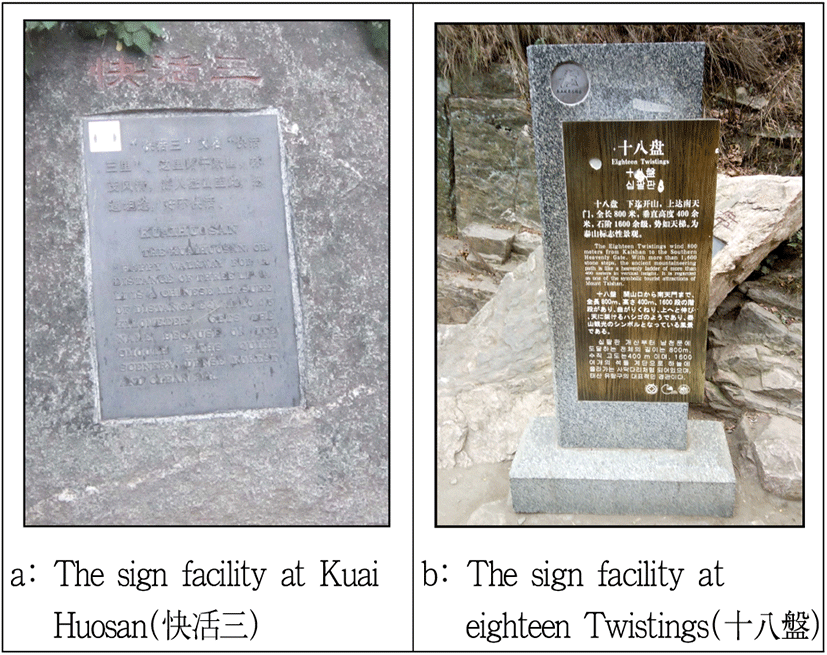
In addition, from the perspective of a7(2.933), the second lowest evaluation value, it can be found that excessively specialized interpretations will lead to a decrease in the interest of tourists.
As shown in Figure 6, the evaluation of b1(3.177) and b6(3.635) are higher than the average(3.067) of Appearance Modeling.
In particular, b6(3.635) material sustainability is the highest one. The reason is held that most of the materials of the Mount Tai Mountaineering Road sign system are wood and stone, which not only harmonizes with the environment of the scenic spot, but also meets the needs of the sustainable development of the scenic spot. Furthermore, the evaluation value of b4(3.123) is close to the average(3.067) of Appearance Modeling. On the other hand, the evaluation value of b2(2.888), b3(2.852), b5(2.730) are lower than the average (3.067) of the Appearance Modeling. It is attributed to that the sign system of Mount Tai Mountaineering Road is mostly in an upright position, without taking the height and angle of tourists’ reading into consideration. The sign facilities on Mount Tai Mountaineering Road are mostly cuboids in shape, lacking the originality of the Mount Tai, which is easily cause the aesthetic fatigue of tourists(Refer to Figure 5b). In particular, 33.6%(92% of female)of the respondents thought that there was no beauty in modeling, 21.5%(74% of male) of the respondents thought that there was beauty in modeling. 42.6%(93% of female)of the respondents thought that there was no originality in modeling and 13.7%(82% of male) of the respondents thought that there was originality in modeling. This shows that the appearance of the sign system is related to gender.
Interpretation Method is an important factor affecting the interpretation effect of the sign system. Of the four factors, the comprehensive evaluation value(2.818) of factor c is the lowest, and its evaluation grade is medium.
As shown in Figure 7, the evaluation values of c1(2.992) and c5(3.014) are higher than the average(2.854) of the Interpretation Method, which means it can basically meet the needs of tourists. The evaluation value of c3(2.895)is similar to the average(2.854) of Interpretation Method. On the other hand, the evaluation of c2(2.63) and c4(2.738) are lower than the average(2.854). It is believed that the low degree of satisfaction is due to the lack of consideration of visitors' participation and diversity of presentation methods(e.g., interesting questions and answers, story cohesion, etc.). In 2015, Mount Tai scenic area implemented the Intelligent Scenic Spot (智慧景區) project, which can be connected to smart mobile devices through the QR code on signboards, and Interpretation Method is represented in various languages such as Korean, Chinese, Japanese and English(Refer to Figure 5b).
As shown in Figure 8, compared with other influence factors (factor a, b, c), the evaluation value of the evaluation items of Layout Management is not significantly different. Firstly, the evaluation values of d1(3.213) and d2(3.162) are higher than the average(3.076), and these two items have the highest weight, indicating the importance of placement position and quantity. In addition, the evaluation value of d4(3.006) is almost the same as the average(3.076) of Layout Management. But the evaluation value of d3(2.923) is the lowest one. In the course of many field investigations, it was found that some of the sign facilities were damaged continuously. For example, the large electronic sign facility at Halfway Gate to Heaven(中天門) and the commentary on the Santandie cascade(三潭疊瀑) have already been damaged.
The grade of the overall fuzzy comprehensive evaluation result of the Mount Tai Mountaineering Road sign system is good, proving that the sign system could basically meet the needs of tourists. The fuzzy comprehensive evaluation results of the four influence factors shows that the three influence factors of Interpretation Content, Appearance Modeling and Layout Management are good and are thought to basically satisfy the needs of tourists. However the level of Interpretation Method as the influencing factor is medium. It can be ascribed to that the way of interpretation does not deepen the understanding of natural and cultural value of tourists in the Mount Tai Mountaineering Road.
V. Conclusion
In this study, the satisfaction of tourists to the sign system of Mount Tai Mountaineering Road was investigated by questionnaire, and the factor analysis and fuzzy comprehensive evaluation were carried out. The results are as follows.
First, four influence factors were including Interpretation Content, Appearance Modeling, Interpretation Method and Layout Management. The Interpretation Content involved content structure and content accuracy, etc.. The Appearance Modeling contained the style and humanized scale of sign facilities, etc.. The Interpretation Method consisted of new media and the participation of tourists, etc., and the Layout Management comprised the evaluation items such as location, quantity and daily management etc..
Second, the order of the weight value of the Mount Tai Mountaineering Road sign system was Interpretation Content, Appearance Modeling, Interpretation Method, Layout Management respectively from high to low, and the conclusion that tourists paid more attention to the characteristics of practicality and aesthetics could be drawn. Moreover, the weight values of Interpretation Content and Appearance Modeling were the highest. These can be thought to be the most important factor for tourists. The Interpretation Content had the most practical significance because it could provide the most information to visitors, and the Appearance Modeling had aesthetic significance such as the style, appearance and material of the sign system. Therefore, it was thought that the sign system should provide practical information and beauty to make people feel better in the process of tourism.
Third, the overall satisfaction rating of the Mount Tai Mountaineering Road sign system was good and was thought to basically satisfy the needs of tourists. From the four factors, the satisfaction evaluation level of the Interpretation Content, Appearance Modeling, Layout Management is good, and Interpretation Form is medium.
By this study, the following suggestions are provided to improve the satisfaction degree of tourists for the sign system on Mount Tai Mountaineering Road in the future.
First of all, the interest of the content and educational significance of interpretation for tourists should be strengthened. For example, When expressing the meaning of No Smoking, interesting expressions, such as “Into the heaven, why do we need smoke from man's world(進入天堂, 何需人間煙火)", “I'm most afraid of the smog, making your beautiful face blurred(我害怕煙霧蒙蒙,模糊了您美麗的面容)”can be used(Zhang, 2016). In addition, poems or poem tablets(詩碑) left by famous people in past dynasties on Mount Tai can be interpreted by stories that are easy to understand or questions and answers. Second, improve the aesthetic appearance of the sign system, and take the humanized design into consideration. For instance, design the sign system in accordance with the image of Mount Tai to endow it with the originality. In addition, the construction should take the humanized angles and scale into account. For example, the reading angles of tourists can be adjusted automatically according to the sunlight. Third, the way of interpretation can be optimized to encourage tourists to participate and experience. For example, based on the history that ancient Chinese emperors ascented Mount Tai for offering sacrifices to gods of universe(封禪), the participatory interpretation of ‘treasure hunt’ could be introduced. In addition, the famous stele of Mount Tai is inscribed with "insect two(虫二)", which is literally "insect two", but it is actually representing "wind moon(風月)". It was engraved by Liu Tinggui(劉廷桂), a famous calligrapher of the Qing Dynasty, in order to praise the infinite scenery of Mount Tai. Here the insect two is the traditional Chinese characters of wind moon (風月) without the outer borders. Visitors can participate in crossword puzzles based on historical stories, which would not only help them understand the culture of Mount Tai, but also increase their interesting participation. Forth, through modern information technology, scenic spots can share the temperature information of each scenic spot, the number of tourists, the best time to visit and the angle of view and other information. By this way, tourists can make personalized tour routes according to their own needs.

